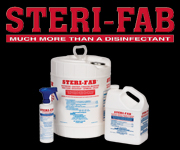The good news was the vast majority of citations were relatively minor. Most of the situations resulting in citations, in fact, are common at all college campuses because students are at an age where they feel indestructible and don’t pay close attention to safety procedures. There’s a good chance this description of the traditional college-aged student fits many of your young charges on your own campus Ask a lab planning architect about the most dangerous location in a typical laboratory.
The likely answer will be the same from any number of lab planning architects: the fume hood. This is where the dangerous chemicals are used and where the dangerous activity occurs, even in teaching labs. Additionally, fume hoods are intentionally designed to move air past and into the fume hood to keep fumes away from personnel using the hoods. This air movement can actually feed and enhance the spread of fire. Now ask if fire suppression systems are in their fume hood specifications. This is when they squirm.
Safety Is Far Less Expensive Than an Accident
This doesn’t sound like a good combination, does it? A high-risk user group in a high-risk location performing a high-risk activity. Now, some lab planners will say fire suppression systems are not required by National Fire Protection Association (NFPA) 45, which applies to educational institutions. Well, this is not entirely true. Even if this statement could be taken at face value, I feel no relief when told the minimum required steps have been taken; minimum standards are not enough when your students, faculty, and staff are at risk. What these lab planners are likely referring to is wording in NFPA 45 which states fire suppression is not required if materials used to make the fume hood have a flame spread index of no more than 25. The problem is found in the particulars: this fame spread index does not mean the hood won’t burn; it merely means the materials won’t burn as fast.
The 2015 edition of NFPA 45 also states fume hoods requires automatic fire suppression, ” If a hazard assessment determines one is needed for safe operation of the fume hood.” Take careful not of the wording: “hazard assessment.” If you have not done hazard assessments in your labs recently, perhaps this is your first to-do note from this article.
The Most Dangerous Location
The fume hood is the most dangerous location in a typical lab for a reason; this is where the nasty stuff is, where the dangerous work is done. If a fire starts there, it’s not the kind of fire you start in your own backyard to cook up some s’mores. This wording by NFPA is significant simply because it is “addressed” in the NFPA codes. It represents a “minimum standard” in fire protection, and it should be considered your “first step” in providing a basic level of safety in your laboratory.
While not retroactive, consider this situation. You have a fire in a fume hood. Someone is hurt. Now depositions are required by lawyers. How would you explain to a lawyer why you did not put an automatic fire suppression system into the fume hood when the resulting fire caused severe injury to a young person? Recently, fire marshals in California have actually begun to insist on sprinkler systems in fume hoods. This is a good sign of things to come.
Aside from what is most appropriate from a legal and practical statement, there’s another consideration, an emotional one: Imagine a moment you could be asked this question: “If you knew the fume hood was the most dangerous location, why didn’t you do more to protect your students?” Heaven forbid any of us ever find ourselves in a situation like this, or ever have a student or employee hurt due to a lab fire.
Substantial Damage to Buildings
Possible harm to people is the greatest concern, of course, but not the only consideration. Remember, when there is a fire in a fume hood, the required air flow design can actually support and enhance the spread of the fire. Even worse, these fires rarely stay in the fume hood; they can spread quickly to other parts of your building. By the time room sprinklers are activated, you are likely looking at substantial building damage as well.
Downtime in a lab after a fire event can be long. While there is nothing in property damage that rivals the tragedy of an injured person, building damage can be incredibly expensive. An automatic fire suppression system, while not guaranteed to protect everything, is your first level of protection from suffering a catastrophic fire and should be a common-sense safety device (especially for educational fume hoods).
At least two manufacturers make UL listed, cost-affordable, second-generation fire suppression systems suitable for fume hoods. They can be provided in new fume hoods, and are also relatively easy to install in existing fume hoods. No electricity is required for operation. The system is installed inside the fume hood with a heat-sensitive detection tube that when pressurized, becomes a linear pneumatic heat sensor. When the tube bursts, the pressure loss activates the fire suppression system to quickly flood the fume hood compartment even if the sash is open. Typically the hood is flooded with suppressant well before the fire has had a chance to grow and spread. Located out of the way, fume hood operation and maintenance are not affected. Typically these systems are UL/FM-approved, which can help lower insurance rates. The insurance savings can help pay for these safety devices.
Checking in with Safety Officials
No one likes to think about accidents, but some of us are still responsible for trying to keep them from happening. Perhaps it is time to ask if your safety officials have updated their assessments on the fume hoods in your facilities, and which hoods should perhaps have fire suppression systems. What’s your peace of mind worth? What is the safety of your students worth?










